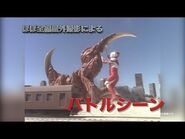Ultraman: Towards the Future, known as Ultraman Great in Japan, is a tokusatsu sci-Fi/kaiju/superhero TV series produced in 1990 in Australia by the South Australian Film Corporation and Tsuburaya Productions, making it the tenth series in the Ultraman Series, and the first to be produced in Japan's Heisei era.
The series was first released on home video and LaserDisc in Japan on September 25, 1990, and was later famously broadcast on Tokyo Broadcasting System from July 8 to September 30, 1995 (after an initial satellite run on NHK-BS2 from December 23, 1991 to January 4, 1992). The show was distributed in the United States by Sachs Family Entertainment, and broadcast weekly from January 4 to March 28, 1992.
The series consists of 13 episodes, the first 6 making up the "Gudis Threat" story arc. At the time, eco-awareness was at a high, and many episodes included environmental themes. Ultraman's three minute time limit is also attributed to "Earth's polluted atmosphere" in this version.
Production[]

Promotional artwork for Ultraman: Towards the Future.[1]
In 1986, preparations began for the project "New Ultraman," which was scheduled to be broadcast on TBS. At that time, Tsuburaya Productions was busy collaborating with Hanna-Barbera Productions to create the animated film Ultraman: The Adventure Begins. As for the new project driving the live-action series forward, it was proposed based on the popularity gained from the reruns of past series on television at that time. The project was overseen by Koichi Takano, Kazuho Mitsuta, and Kiyoshi Suzuki. Some screenwriters, including Noboru Aikawa, Hidenori Miyazawa, Chiaki J. Konaka, and Akinori Endo, also participated in the initial meetings. However, the project was shelved after six months.[2][3]
In early 1989, under the impetus of Kiyoshi Suzuki, the project was relaunched. Originally aimed at airing on TBS, the project proposal explicitly stated that the greatest allure of Ultraman lies in its "mystery" and declared the exclusion of "Ultra Brothers." This move was not only to initiate a new television series but also to reboot the franchise by resetting key aspects of Ultraman.[2]
The project emphasized three main elements of the original Ultraman series: "Ultraman," "monsters," and the "defense team." Two approaches for constructing the new series were proposed. Approach A advocated for a faithful portrayal of the "defense team" without introducing new concepts. Approach B, which became the core of the project, suggested starting changes from the defense team if modifications to the existing series were required. This involved a "reconstruction" of the defense team, establishing a specialized "LDM" (Laboratory for Destruction of Monsters) responsible for eliminating monsters. The protagonist's affiliation with the defense team shifted from a defense army or police organization to a team focused on monster research, analysis, and countermeasures, presenting a more realistic inclination. This also implied a reinforcement of the human drama aspect through the defense team.[2]
In early March 1989, Chiaki J. Konaka and Kazuya Konaka, who participated in the meeting, submitted a document titled "New Ultraman Conceptual Plot" .[4][5] Based on this synopsis, they organized a "New Series Proposal." This proposal centered around the Defense Team LULF (Laboratory to Unknown Life Forms), depicting a world where there is no knowledge of monster extermination. The protagonists undertake missions involving preliminary investigations and methods of repelling monsters, attempting to address the issue of the rationality of transitioning from patrol to investigation and then repulsion for a few individuals. Before the start of the second draft, it was confirmed that securing a broadcast slot on TBS would be difficult. Suzuki proposed a strategy of releasing the work in videotape format, which would also ensure easier production costs. A production committee was established with the media department of the Bandai Group at its center.[2]

Under the production of SAFC, the special effects and models of this series present a completely different style from the Japanese series.[6]
To expand globally, the production aimed to use English-speaking countries as its production base, with production taking place outside of Japan. Australia was selected as the filming location, with Paul Nicola[7] recommended by Suzuki as the head of SFX, Andrew Prowse as the director, and Ken Arlidge as the fight scene director. Production was conducted in three shifts on location at the South Australian Film Corporation (SAFC), operated by the South Australian government, with Adelaide as the central hub. Only a few scenes were shot in studios in Sydney.[8][9]
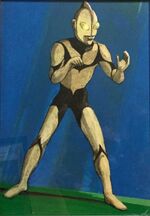
The poster draft for "Ultraman Divine Change" designed by Tohl Narita was commissioned for the promotion of this series. However, due to various reasons, it was ultimately not used.[10][11]
Once the production arrangements were finalized, based on the setting of "New Ultraman," Aikawa created a full outline for the six-episode series titled Ultraman Divine Change . The story centered around the dichotomy of good and evil with Gudis at its core. The Ultraman's setting was clearly defined in the second draft of the "memorandum." They were referred to as "observers," depicting Ultraman as a highly evolved race akin to "gods," observing the growth of life and maintaining a neutral stance towards humanity. However, considering overseas sales, the series was eventually expanded to seven episodes, forming a seasonal structure.[9][12]
By late August 1989, the preparation work by the Japanese team of writers was completed. The scripts written by Aikawa and others were adapted by Terry Larsen[13], who meticulously reconstructed the series' environmental and ecological themes to suit the demands of television broadcasting in Europe and America. Filming and editing work in Australia progressed smoothly, with many special effects scenes taking advantage of Australia's geographical features, utilizing open shooting locations and natural light to convey a sense of scale. The overall principal photography period was only four months.[9]
In the series, the costumes for the monsters were initially planned to be filmed using animatronics and puppets, controlled through a waldo-style cable system. However, due to the inability of Animatronics to convey a sense of strength and speed, as well as its impact on the filming progress, it was ultimately decided not to use them. Instead, rubber suits were used as a substitute. Ultraman's suit, on the other hand, utilized spandex material.[14][15] Vicky Kite was responsible for producing the suits, while Andrew Blaxland supervised the production design. Filming of the work on 35mm celluloid was completed in the first half of 1990. The production news of the series was announced to the public at the end of 1989, with the character images released in February 1990.[9]
The series generated a merchandise line including toys, comic books and a video game.
Synopsis[]
Jack Shindo and Stanley Haggard are members of the first manned expedition to Mars, and on the red planet find a giant slug-like monster, Gudis. Suddenly the giant warrior, Ultraman (Great), arrives and fights Gudis, but is knocked down for a period. Jack Shindo is pinned by a rockslide and Haggard tries to escape in their ship but is blown up by Gudis.
It is then that Ultraman gets up, and when he is on the verge of victory, Gudis changes into a virus and travels to Earth, where it plans on corrupting all life, mutating other creatures into monsters and awakening existing ones. Needing a human host to survive on Earth, Ultraman joins with Jack, allowing him to become the mighty alien when all seems lost. He joins the Universal Multipurpose Agency, or UMA, in order to help them battle the many monsters that threaten humanity.
Characters[]
Protagonist[]
UMA[]
Others[]
- Stanley Haggard
- Ike
- General Brewer
- Sandman
- Leonie Krankstein
Ultras[]
Kaiju[]
- Gudis
- Bogun
- Gigasaurus
- Gerukadon
- Jimmy clone
- Degunja
- Barrangas
- Gazebo
- Majaba
- Bios
- Vegoids
- Ryugulo
- Veronica
- UF-0
- Kodalar
- Kilazee
- The One Who Sleeps Below
Cast[]
| Character | English | Japanese dub |
|---|---|---|
| Jack Shindo | Dore Kraus | Masaki Kyomoto |
| Jean Echo | Gia Carides | Yoshiko Sakakibara |
| Arthur Grant | Ralph Cotterill | Akiji Kobayashi |
| Kim Shaomin | Grace Parr | Fumi Hirano |
| Charles Morgan | Lloyd Morris | Shingo Yanagisawa |
| Lloyd Wilder | Rick Adams | Koichi Yamadera |
Voice Actors[]
| Character | English | Japanese dub |
|---|---|---|
| Ultraman Great | Matthew O'Sullivan | Masaaki Okabe |
| Narrator | John Bonney Gus Mercurio (movies) |
Hiroshi Fujioka (episodes 1-6) Kenji Utsumi (episodes 7-13) Tessho Genda (episode previews) |
Guest Cast[]
| Character | English | Japanese dub |
|---|---|---|
| Stanley Haggard | Jay Hackett[16] | Eizou Tsuda |
| Ike | David Grybowski[17] | Kazuhiko Kishino |
| Technicians[18] | Chris Kemp[17] Debbie Little[17] Paul Coulson[19] Nicki Patterson[19] |
|
| Jimmy Martin | Hamish Fletcher[20] | Daisuke Namikawa |
| Rachael[18] | Fiona Jarvis[20] | Atsuko Koganezawa |
| Archaeologist[18] | Raymond Jurgens[20] | |
| Site Foreman[18] | Brian Knott[20] | |
| Caitlin McDougall[20] | ||
| Greg Elliott[20] | ||
| Mudjudi | Ernie Dingo[21] | Ryusei Nakao |
| Dave[22] | Alec Wilson[21] | |
| Robbo[22] | Stephen Horne[21] | |
| Bartender[22] | Betty Sumner[21] | |
| General Brewer | Peter Raymond Powell[23] | Shozo Iizuka |
| Inspector Sykes | Norman Yemm[24] | Kiyoshi Kobayashi |
| Mary[22] | Carmel Johnson[24] | |
| Jenny | Sharna Coates[24] | Atsuko Mine |
| Bulldozer Driver[22] | Adrian Shirley[24] | |
| Peter Green[24] | ||
| Boy | Russel Wirrabone[24] | |
| Sandman | Peter Dunn[25] | Takuzou Kamiyama |
| Johnson | Don Barker[25] | Masao Imanishi |
| Dr. Leonie Krankstein | Lyn Shakespeare[26] | Aiko Konoshima |
| Brian Debnam[26] | ||
| Graham Dawson[26] | ||
| Sebastian Scott[26] | ||
| Tib Horvath[26] | ||
| Veronica | Oriana Panozzo[27] | Keiko Han |
| Susan[22] | Lym Semler[27] | |
| Drunk[22] | Francis Greenslade[27] | Masashi Hirose |
| Homeless Persons[22] | Caroline Mignon[27] Sean Ladhams[27] |
Hideyuki Umezu |
| Lou Varsallo[22] | Ike's Assistant[27] | |
| Railway Guard[22] | Claire Benito[27] | |
| Veronica as an older woman[22] | Lauriel Smart[27] | |
| Ryugulo | Leigh Biolis (voice)[22] Lloyd Morris (human form)[22] |
Kazuhiro Nakata |
| Norberg | Patrick Frost[28] | Ichiro Nagai |
| Kathryn Fisher[28] | ||
| Philip Stephens[28] | ||
| Geoffrey Ashton[28] | ||
| Curator/Evangelist[22] | Edwin Hodgeman[29] | |
| Silo Kid[22] | Michael Coard[29] |
Suit Actors[]
- Ultraman Great: Steve Apps and Robert Simper
- Monsters: Mike Read and Johnny Halliday
Staff[]
- Director: Andrew Prowse
- Series compositor and screenwriter: Terry Larsen
- Original draft writers: Noboru Aikawa, Hidenori Miyazawa, Chiaki J. Konaka, Akinori Endo, Satoshi Suzuki
- Executive producers: Noboru Tsuburaya, Richard Watson (SAFC)
- Supervising producers: Kiyoshi Suzuki, Gus Howard
- Producers: Kiyoshi Suzuki, Sue Wild
- Music: Shinsuke Kazato
- Music performance: Adelaide Symphony Orchestra
- Music producer: Shizuka Tamagawa
- Music directors: Kazuo Kogure, Kevin Roper
- Music production supervisors: Hidetoshi Kimura, Michael Elwood
- Directors of photography: Paul Dallwitz, Steve Newman (special effects)
- Special effects supervisor: Paul Nicola
- Special effects consultant: Koichi Takano
- Editors: Richard Hindley, Nicholas Holmes
- Production designer: Andrew Blaxland
- Art directors: Ken James, Bill Passmore (special effects)
- Action sequence director: Ken Arlidge
- Stunt choreographer: Glen Boswell
- Ultraman designer: Hiromitsu Murayama
- Kaiju designer: Minoru Yoshida
- Action vehicle designer: Kunio Aoi
- Japanese version producer: Juuhachi Shimada
- Japanese version sound director: Hiroshi Yamazaki
- Japanese version production: Production Yurika
- Production cooperation: Mitsubishi Motors, Royal Australian Air Force
- Production company: The South Australian Film Corporation
- Production: Tsuburaya Productions, Ultraman Production Committee (Bandai, Kodansha, Taki Corporation, KSS, Marubeni)
Music[]
- Opening Themes
- Bokura no Great (Japanese)
- Artist: Masaki Kyomoto
- The Silver Giant (English)
- Composition: Shinsuke Kazato
- Ending Theme
- Chikyu wa Kimi o Matteita
- Artist: Masaki Kyomoto
- Insert Themes
- Mirai e Mukatte
- Artist: Masaki Kyomoto
- THE EARTH IT'S HURTIN'
- Artist: Masaki Kyomoto
Merchandising[]
Soundtrack[]
The music was composed by Shinsuke Kazato and released by Nippon Columbia Co., Ltd (COCC-9745) in 1992. The soundtrack is very rare, it went quickly out of print and can now only be found used. The music was performed by The Adelaide Symphony Orchestra.
Toy Line[]
The series also received an equally short-lived toyline from DreamWorks toys. The figures were 10" tall and included Ultraman, who came with a mini Jack Shindo, as well as his enemies Bogun, Barrangas, Majaba, Gerukadon and Kilazee. Also released was a toy of the Hummer vehicle which included a mini figure of Charlie Morgan. A toy of the Saltop was advertised on the back of all boxes, though it was never released or produced according to a Bandai representative. Despite their unique size, the toys were not without their problems. Jack, Charlie and the Hummer were well out of scale with the other toys, while the Ultraman figure lacked articulation. Also, despite being the main villain for the first story arc, neither version of Gudis was released as a toy in the DreamWorks line (although one did appear in Bandai's Japanese vinyl Ultraman line). However, Gudis was mentioned on the packaging of all the figures.
Home Media[]
There were two video releases in the West. In 1990, New World Entertainment distributed two feature versions - Ultraman - The Alien Invasion and Ultraman - The Battle For Earth, which were released in Canada by Malofilm Video. They were slightly letterboxed and some limited post production video effects were added as well as replacing the original narrator John Bonney with Gus Mercurio. In 1993, L.A. Hero released the entire series in 13 voulmes. Some of the releases were taken from the television syndication video masters and still had the commercial bumpers.
Emotion released the entire series on LaserDisc.
The Japanese release of the show had Ultraman Great's voice added with additional Ultra kiai recorded by Masao Nakasone (though it frequently overlaps with Matthew O'Sullivan's dubbed grunts), with his Color Timer's sound being reused from the original's.
In 2017, the entire series was released on Blu-ray in Japan, with both English and Japanese dubbed language tracks, and a total two versions of the TV show: English Hardsubbed, and Japanese broadcast. The release also features two compilation movies also in original English, non-hardsubbed release. All of the Episodes are upscaled and slightly modified from the Japanese broadcasts.[30]
Spin-offs[]
- Manga: A manga adaptation created by Kazuhiko Shimamoto was serialized in TV Magazine in 1990 and 1991. A tankobōn of the manga was published by Tokuma Shoten on March 20, 1993.
- Comic: A comic book retelling or sequel to the series was published in early 1993 and 1994 by Harvey Comics under their short-lived "Nemesis" label, printed in the United States.
Cancelled Plans[]
Season 2[]
As revealed by Sho Aikawa there were plans to make a season 2 of Great. While most information on it is unknown, what is known is that it would've continued after the finale of season 1 with Ultraman Great returning to Earth to protect it from more monsters and aliens. The Alien Baltan was set to appear as alien invaders in a three-episode storyline with some other popular Ultra monsters potentially showing up as well. Veronica and Ryugulo were to come back and assist the Ultra in defending Earth, mainly in the Baltan's invasion. The Ultra Brothers were also considered for guest appearances. The season would've had 14 episodes in total or episodes 14 - 27.
Ultraman Great Goes To Japan[]
There was a movie idea thrown around about Ultraman Great visiting Japan and stopping a powerful villain there. Not much else is known really beside the fact of potential crossovers with Showa Ultras.
Gallery[]
Videos[]
Trivia[]
- In a 2017 interview with Japanese production staff, further testimonies were provided regarding the preparation process at that time:[32]
- According to Suzuki, during the initial planning stages, he received a suggestion from a Japanese Ultraman fan living in Australia, asking, "How about letting Ultraman fly in this blue sky?" However, given the state of the Australian film industry at the time, Tsuburaya Productions had concerns about whether a tokusatsu production could be successfully made in Australia.
- Regarding the script allocation, all scripts were conceptualized and written by Noboru Aikawa, who started from the plot outline. Aikawa completed the six-episode script by early May 1989. Since Asaka wanted the six episodes to have a cohesive story arc, the plot was designed to revolve around the battle with the monster, Gudis, culminating in Ultraman defeating Gudis and then leaving. Due to plans for a television broadcast, it was decided to introduce more variety starting from episode 7.
- At that time, the Japanese staff didn’t have detailed plans regarding the work in Sydney and Adelaide due to differences in production systems. After arriving in Australia on September 18, the Japanese team frequently traveled between the two cities to oversee the production progress. Suzuki Kiyoshi and Koichi Takano also provided guidance to the Australian crew during the filming process.
- Alongside its broadcasts in the United States and Japan, the success of the former would prompt the series' broadcast in several other countries: Thailand would air it on Channel 9 in 1993, Colombia would air it on Canal A in 1993, Australia would air it on NWS9 in December 1993, Chile would air it on Chilevisión in 1994, the United Kingdom would have air it on Nickelodeon in 1994, and Spain would have it air on TVE-1 in 1994, with the latter two countries referring to the show as just Ultraman.
External Links[]
References[]
- ↑ https://www.scifijapan.com/ultraman-tsuburaya/ultraman-towards-the-future-retrospective-in-shadowland-magazine
- ↑ 2.0 2.1 2.2 2.3 Ultra Tokusatsu PERFECT MOOK vol. 18: Ultraman Great / Ultraman Powered, pg 4
- ↑ Entertainment Archive : Ultraman G & Ultraman Powered pg 66
- ↑ https://moviewalker.jp/news/article/202295/p2/
- ↑ https://akiba-souken.com/article/37636/?page=2
- ↑ https://rcscifi.blogspot.com/2020/10/ultraman-towards-future-aka-ultraman_11.html
- ↑ https://rcscifi.blogspot.com/2021/02/ultraman-towards-future-aka-ultraman.html
- ↑ https://www.nfsa.gov.au/latest/last-40-years-exploring-south-australia-film
- ↑ 9.0 9.1 9.2 9.3 Ultra Tokusatsu PERFECT MOOK vol. 18: Ultraman Great / Ultraman Powered, pg 5
- ↑ https://x.com/nishi_ogi/status/981763265888796672
- ↑ https://muuseo.com/PPPppppppQQQ/items/36
- ↑ Entertainment Archive : Ultraman G & Ultraman Powered pg 68
- ↑ https://vantagepointinterviews.com/2021/11/19/ultraman-out-west-terry-larsen-on-scripting-the-groundbreaking-tokusatsu-series-ultraman-towards-the-future/
- ↑ https://vantagepointinterviews.com/2020/12/10/from-monster-kid-to-monster-maker-model-maker-norman-yeend-on-living-the-dream-on-the-set-of-ultraman/
- ↑ https://vantagepointinterviews.com/2021/03/21/ultraman-down-under-a-candid-conversation-with-steve-rosewell-about-ultraman-towards-the-future/
- ↑ Episode 1 credits
- ↑ 17.0 17.1 17.2 Episode 2 credits
- ↑ 18.0 18.1 18.2 18.3 Ultraman: The Alien Invasion credits
- ↑ 19.0 19.1 Episode 5 credits
- ↑ 20.0 20.1 20.2 20.3 20.4 20.5 Episode 3 credits
- ↑ 21.0 21.1 21.2 21.3 Episode 4 credits
- ↑ 22.00 22.01 22.02 22.03 22.04 22.05 22.06 22.07 22.08 22.09 22.10 22.11 22.12 22.13 22.14 Ultraman: The Battle for Earth credits
- ↑ Episode 6 credits
- ↑ 24.0 24.1 24.2 24.3 24.4 24.5 Episode 7 credits
- ↑ 25.0 25.1 Episode 8 credits
- ↑ 26.0 26.1 26.2 26.3 26.4 Episode 9 credits
- ↑ 27.0 27.1 27.2 27.3 27.4 27.5 27.6 27.7 Episode 10 credits
- ↑ 28.0 28.1 28.2 28.3 Episode 11 credits
- ↑ 29.0 29.1 Episode 12 credits
- ↑ https://m-78.jp/ultraman-bd/ultraman_great/
- ↑ https://x.com/boomerangsaucer/status/1309266772533493760
- ↑ Entertainment Archive : Ultraman G & Ultraman Powered pg 66-69

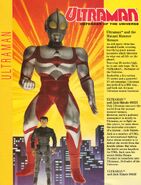
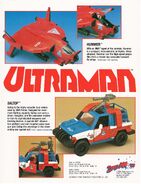
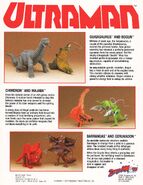
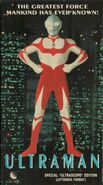
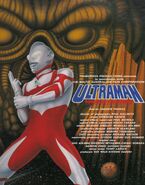
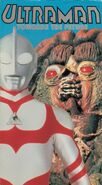
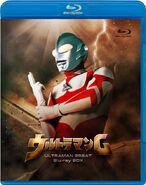
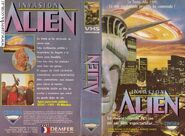



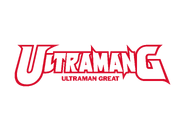








![1990 Japanese dubbing cast.png (2.5 MB) Japanese dubbing cast for "Ultraman: Towards the Future"[31]](https://static.wikia.nocookie.net/ultra/images/c/c8/1990_Japanese_dubbing_cast.png/revision/latest/scale-to-width-down/185?cb=20240813090844)
